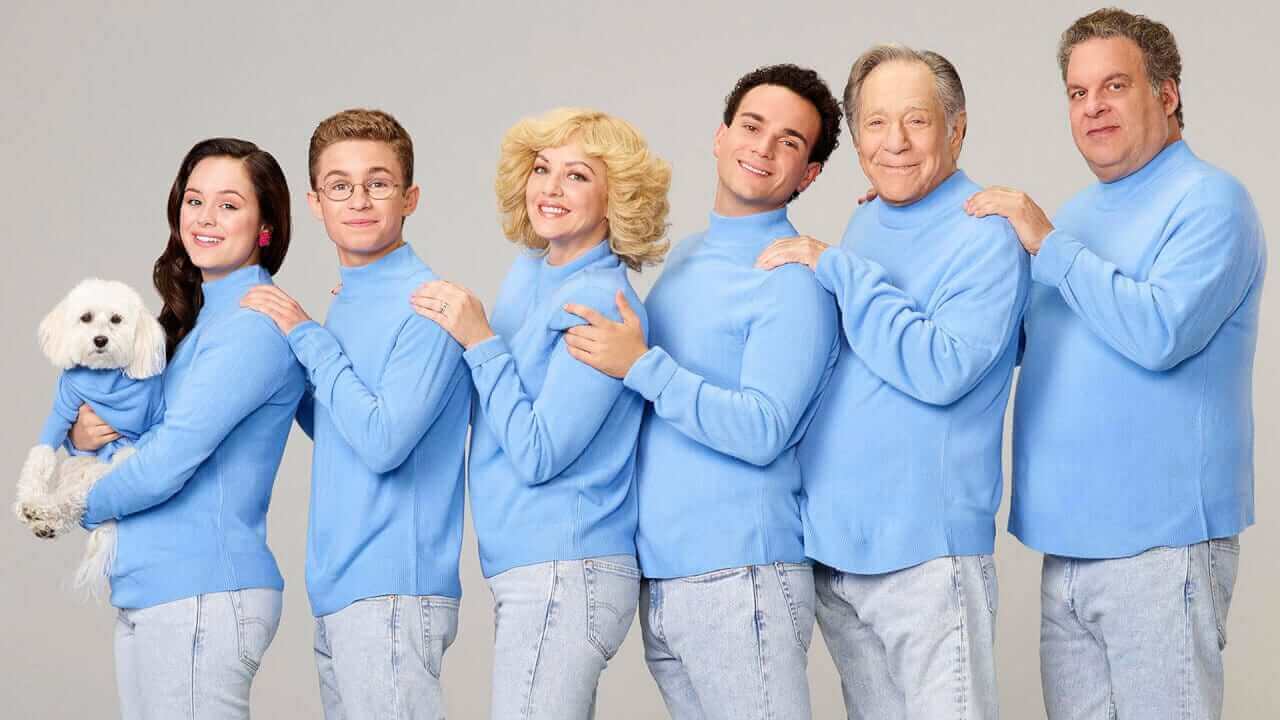The Goldbergs: The Show's Evolution Over The Seasons

Table of Contents
The Early Seasons: Establishing the Goldberg Family Dynamic
The first few seasons of The Goldbergs expertly laid the foundation for the show's enduring success. They introduced us to the core characters and their uniquely dysfunctional, yet ultimately loving, relationships. The show's 1980s setting is a crucial element, providing a backdrop of vibrant, nostalgic pop culture references that resonate with viewers of all ages. This establishes the comedic tone and visual style that defines The Goldbergs.
-
The initial portrayal of Adam, Barry, Erica, Beverly, and Murray: We're introduced to the boisterous Beverly Goldberg, her perpetually exasperated husband Murray, and their three children: the nerdy and filmmaking-obsessed Adam, the athletic but insecure Barry, and the rebellious and independent Erica. These initial characterizations are exaggerated, setting the stage for the show's comedic heart.
-
The establishment of recurring jokes and running gags: From Beverly's overbearing and often inappropriate parenting style to Murray's gruff exterior hiding a surprisingly tender heart, these running gags become a significant part of the show's humor and character development. Other recurring jokes, such as Adam's obsession with his various crushes and Barry's romantic misadventures, add to the show’s comedic rhythm.
-
The exploration of classic 80s pop culture references: The show masterfully uses 80s music, movies, television shows, and fashion to enhance its comedic timing and create a sense of nostalgia. These references become integral to the storytelling, adding another layer of humor and relatability for viewers familiar with the era.
-
The early seasons' emphasis on family bonding amidst everyday chaos: Despite the constant bickering and misunderstandings, the early seasons emphasize the underlying love and support within the Goldberg family. This core theme remains consistent throughout the show's run, ensuring viewers always connect with the family's emotional core.
Mid-Season Shifts: Character Development and Story Arcs
As The Goldbergs progressed, the characters underwent significant development, leading to changes in their relationships and the overall storylines. The show moved beyond simple comedic setups, exploring more complex character arcs and interpersonal dynamics. This evolution of the characters kept the show fresh and engaging for long-term viewers.
-
The evolution of Adam's character: Adam's journey from a mischievous kid to a young adult navigating the complexities of relationships and career choices is a key element of the show's mid-season development. His character matures, allowing for more nuanced storylines and emotional depth.
-
The changing dynamics between siblings: The relationships between Adam, Barry, and Erica evolve from childish rivalry to a more mature understanding and support system. This allows the writers to explore sibling relationships in a realistic and relatable way.
-
The development of Murray and Beverly's relationship: While their comedic dynamic remains central, we see a gradual evolution in Murray and Beverly's relationship. We see glimpses of their underlying affection and shared history, adding depth to the seemingly one-dimensional characters established in earlier seasons.
-
The introduction of significant recurring characters: The introduction of characters like Pops, Geoff, and other significant recurring roles further expanded the show's universe and provided additional avenues for character development and comedic storylines. These new characters often challenge and deepen the relationships of the core family.
Later Seasons: Maturity and Addressing Contemporary Issues
In its later seasons, The Goldbergs demonstrates a remarkable ability to adapt and evolve while remaining true to its comedic roots. The show tackles more mature themes and incorporates contemporary social issues relevant to the characters' experiences, broadening its appeal and relevance to a wider audience.
-
Exploration of more complex family issues: As the Goldberg children grow older, the show tackles complex issues such as college life, navigating romantic relationships, career choices, and the challenges of adult life. These realistic portrayals offer a deeper understanding of the characters and their struggles.
-
Incorporation of contemporary social issues: The Goldbergs subtly incorporates contemporary social issues relevant to the characters' experiences, reflecting a growing awareness and sensitivity to broader societal concerns. This adds layers of realism and relevance to the show.
-
A potential shift in comedic style or approach to storytelling: While maintaining its core comedic style, the show may adapt its approach to storytelling to better suit the more mature themes explored in later seasons. This evolution allows for a natural progression in the show's comedic tone and structure.
-
The impact of character departures or additions: The introduction or departure of characters alters the dynamic and introduces new challenges and storylines, reflecting the realities of family life and relationships.
The Impact of the Time Jump
While not a massive time jump like some shows, The Goldbergs has incorporated smaller time leaps between seasons, notably in later seasons. This subtly alters the characters' relationships and dynamics, creating new situations and comedic opportunities.
-
How the time jump altered character relationships and dynamics: The passing of time allows for character maturation and changes in relationships, leading to new comedic and dramatic storylines.
-
The impact of the time jump on the show's tone and comedic style: While the core humor remains, the time jump may slightly shift the focus and comedic style to better fit the evolved character ages and circumstances.
-
The introduction of new challenges and storylines: The time jump introduces new challenges and storylines, reflecting the realities of life progression, such as college graduation, career choices, and significant life transitions.
Conclusion
The Goldbergs' success lies in its ability to evolve while retaining its core appeal. The show's journey across nine seasons demonstrates a remarkable ability to balance nostalgia with contemporary relevance. From the initial establishment of the iconic Goldberg family dynamic to the exploration of more complex themes in later seasons, The Goldbergs has consistently provided viewers with relatable humor and heartwarming family moments.
Have you been following The Goldbergs' journey? Share your favorite moments from each season in the comments below! Let's discuss the evolution of this iconic family sitcom and what makes The Goldbergs such a lasting success. What are your predictions for future Goldbergs seasons?

Featured Posts
-
 The Fdas Clampdown On Off Brand Ozempic What It Means For You
May 22, 2025
The Fdas Clampdown On Off Brand Ozempic What It Means For You
May 22, 2025 -
 Steelers Draft Strategy Focusing On Quarterbacks
May 22, 2025
Steelers Draft Strategy Focusing On Quarterbacks
May 22, 2025 -
 The Goldbergs The Shows Evolution Over The Seasons
May 22, 2025
The Goldbergs The Shows Evolution Over The Seasons
May 22, 2025 -
 Fastest Crossing Man Completes Record Breaking Australian Foot Journey
May 22, 2025
Fastest Crossing Man Completes Record Breaking Australian Foot Journey
May 22, 2025 -
 Route 15 On Ramp Closed Following Crash Traffic Delays Expected
May 22, 2025
Route 15 On Ramp Closed Following Crash Traffic Delays Expected
May 22, 2025
